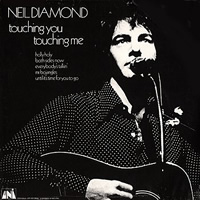It’s a blip: a Russian Microsoft portal aptly named MicrosoftPortal discovered a boolean setting called “CanSuppressStartScreen” that suggests that users of the upcoming version of Windows, thus far called “Blue,” will be able to bypass the start screen and drop right into the classic Windows environment? While this sounds like a boon to some, it marks a distinct step backward for the dream of an all-touch Windows machine.
But, as Hexus notes, it also means that Microsoft could be aiming at a different demographic, a demographic that doesn’t want or cannot afford a true touchscreen experience on their PCs.
First, consider the cost of touch. A standard 22-inch monitor costs about $149 although you can get cheaper models if you hunt. A standard touchscreen monitor costs $300. Depending on configuration, a touchscreen laptop can cost double a non-touchscreen model. The same goes for components – a 12-inch WXGA screen costs $90 while a touchscreen costs $240. In short, touchscreen still adds quite a bit to the price of a laptop and reduces manufacturer margins.
I could, for example, see a day when Microsoft releases “Classic Edition” Windows 8 for, say, embedded applications or entry-level users. This system could feasibly eschew all touch interaction entirely, reducing the Windows experience to the XP experience with which so many around the world are already familiar.
But this is a slippery slope. The draw of Windows 8, in my mind, is the break from the old. To paraphrase that old cliche, when all you have is a touchscreen interface, everything looks like a touchscreen. Microsoft would love it if every device was a Surface (and that wouldn’t be a bad thing, to be clear) and I suspect deep in Redmond most folks are hoping the classic interface goes away entirely. But, sadly, that’s not the case.
When users like Chris Pirillo actively complain about Win8 and even the nerds at Engadget cite backwards compatibility as a major feature, you have a problem. It’s a generational problem that stems from a group of power users used to one way doing things. It’s this same generational pull that ensures that OS X will stay touchscreen unfriendly for at least a few more years.
Touch is here to stay, but only in a certain context. Mobile devices need touchscreens because mice and keyboards just don’t cut it while you’re mucking about on the road. However, when you have a bit of time and a lap handy, a laptop with touchpad and keyboard are far superior.
A Classic version of Windows 8 is a huge change and a huge step backwards for Microsoft. But, and this is wildly important, if Microsoft is to be successful in IT and fleet laptop installations, it has to offer a product that will take into consideration generational prejudices. Not so long ago, Microsoft said it would not compromise. For now – and I say this as a fairly active user of Win8 – they are going to have to.

